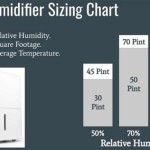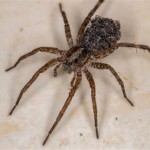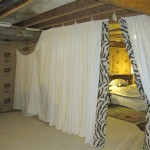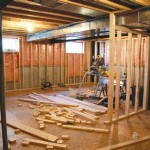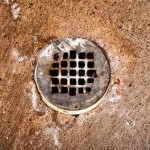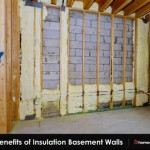What Insulation Do You Use For Basement Ceiling?
Insulating a basement ceiling is a common and effective way to improve the overall energy efficiency and comfort of a home. A properly insulated basement ceiling helps to reduce heat loss in the winter and keep the house cooler in the summer, leading to lower energy bills. It also contributes to improved soundproofing between the basement and the floor above. However, selecting the right type of insulation for this specific application is crucial, as basement environments often have unique characteristics, such as higher humidity levels and potential for moisture problems.
The ideal insulation for a basement ceiling must effectively manage temperature fluctuations, resist moisture absorption, and provide adequate thermal resistance, measured by its R-value. Several types of insulation meet these requirements, each with its own advantages and disadvantages in terms of cost, installation difficulty, and performance. Factors to consider include the climate, the presence of existing utilities, and the homeowner's budget.
Understanding Key Considerations
Before choosing an insulation type, several factors warrant careful evaluation. These considerations influence the effectiveness and longevity of the insulation, as well as the overall comfort and energy efficiency of the home.
Moisture Management: Basements are prone to dampness due to their proximity to the ground. Moisture can significantly reduce the effectiveness of many types of insulation and lead to mold growth, which can pose health risks and damage the building structure. Therefore, selecting an insulation material with inherent moisture resistance or incorporating a vapor barrier is essential. The vapor barrier should typically be installed on the warm side of the insulation, which, in most climates, is the side facing the living space above.
R-Value Requirements: The R-value of insulation indicates its resistance to heat flow. Higher R-values provide greater insulation. The required R-value for a basement ceiling varies depending on the climate zone. Colder climates necessitate higher R-values to minimize heat loss. Local building codes often specify minimum R-value requirements for insulation, and homeowners should consult these codes before beginning an insulation project.
Accessibility and Installation: The ease of installation is another important factor. Some insulation types are easier to install than others, and some may require professional installation or specialized equipment. The accessibility of the basement ceiling should also be considered. Obstructions like pipes, ducts, and wiring can make installation more challenging, necessitating the use of insulation that can be easily cut and fitted around these obstacles.
Cost and Budget: The cost of insulation varies significantly depending on the type, R-value, and installation requirements. Homeowners should establish a budget and research the costs associated with different insulation options to determine the most cost-effective solution that meets their needs and performance expectations. It’s prudent to consider the long-term savings on energy bills when evaluating the upfront cost of insulation.
Common Insulation Types for Basement Ceilings
Several types of insulation are commonly used for basement ceilings, each with distinct properties and applications. The selection process requires careful consideration of the aforementioned key considerations.
Fiberglass Insulation: Fiberglass insulation is a widely used and affordable option. It comes in batts or rolls and is relatively easy to install between floor joists. However, fiberglass is susceptible to moisture damage and loses its insulating properties when wet. It is essential to use a vapor barrier with fiberglass insulation in basements to prevent moisture from penetrating the material. While cost-effective, fiberglass may not be the best choice in highly damp basements without proper moisture mitigation strategies.
Rigid Foam Insulation: Rigid foam insulation, such as extruded polystyrene (XPS) or expanded polystyrene (EPS), offers excellent moisture resistance and a high R-value per inch. It is typically installed directly against the basement ceiling and can be attached with adhesive or mechanical fasteners. Rigid foam provides a continuous layer of insulation, minimizing thermal bridging and air leakage. It is a good option for basements with moderate moisture concerns and offers a durable and effective insulation solution.
Spray Foam Insulation: Spray foam insulation, either open-cell or closed-cell, is an effective option for insulating basement ceilings. Closed-cell spray foam offers a higher R-value per inch and acts as a vapor barrier, making it particularly suitable for basements with high humidity levels. Open-cell spray foam is less expensive but does not provide a vapor barrier and has a lower R-value. Spray foam fills gaps and cracks effectively, creating an airtight seal that minimizes air leakage and improves energy efficiency. However, professional installation is typically required for spray foam insulation.
Mineral Wool Insulation: Mineral wool insulation, also known as rock wool or slag wool, is made from recycled materials and offers excellent fire resistance and soundproofing properties. It is also moisture-resistant and does not support mold growth. Mineral wool is available in batts or rolls and can be installed between floor joists like fiberglass insulation. It is a good option for homeowners seeking a sustainable and high-performance insulation material for their basement ceiling.
Installation Best Practices
Proper installation is crucial for maximizing the effectiveness of any insulation type. Incorrect installation can lead to reduced R-value, moisture problems, and other issues that compromise the performance of the insulation.
Preparation: Before installing insulation, thoroughly clean the basement ceiling and address any existing moisture problems. Repair any cracks or leaks in the foundation walls and ensure proper ventilation in the basement. This will help to prevent moisture from accumulating in the insulation and causing damage.
Cutting and Fitting: Accurately measure the spaces between floor joists and cut the insulation to fit snugly. Avoid compressing the insulation, as this can reduce its R-value. For rigid foam insulation, use a sharp utility knife to cut the foam board to the desired size and shape. For batts or rolls, use a insulation knife or a utility knife to cut the material to the correct length.
Securing the Insulation: Secure the insulation in place using appropriate fasteners or adhesive. For fiberglass or mineral wool batts, use friction fit or install wire supports to hold the insulation in place. For rigid foam insulation, use construction adhesive specifically designed for foam boards or mechanical fasteners such as screws or nails. For spray foam insulation, follow the manufacturer's instructions for application and ensure proper ventilation during the installation process.
Addressing Obstructions: Carefully fit the insulation around any pipes, ducts, or wiring. Use a sharp knife or scissors to cut the insulation to accommodate these obstacles. Seal any gaps or cracks around the obstructions with caulk or spray foam to prevent air leakage. Ensuring a continuous layer of insulation around these areas is vital for maintaining energy efficiency.
Vapor Barrier Installation: If the chosen insulation type does not have an integrated vapor barrier, install a separate vapor barrier on the warm side of the insulation. Use a polyethylene film or a vapor-retardant paint to create a continuous vapor barrier. Overlap the seams of the vapor barrier by at least 6 inches and seal them with vapor barrier tape to prevent moisture from penetrating the insulation. Proper vapor barrier installation is critical for preventing moisture problems in the basement.
Safety Precautions: When working with insulation, wear appropriate personal protective equipment (PPE), including gloves, a dust mask, and eye protection. This will help to protect your skin, lungs, and eyes from irritation and potential health hazards. Work in a well-ventilated area to minimize exposure to airborne particles. Follow the manufacturer's instructions for handling and disposal of the insulation materials.
Selecting the appropriate insulation for a basement ceiling involves a comprehensive assessment of the specific environment, budget, and desired performance. Each insulation type offers unique advantages and disadvantages, and the optimal choice depends on a homeowner's individual needs. Proper installation techniques are paramount to ensure the insulation performs effectively and provides long-lasting benefits in terms of energy efficiency, comfort, and moisture management.

Should I Insulate My Basement Ceiling And Walls Aire Serv

What Is Basement Ceiling Insulation And It Worth

Ceiling Insulation In Your Basement

What Are The Pros And Cons Of Basement Ceiling Insulation Upgradedhome Com

Best Insulation For Soundproofing Your Ceiling Renoviso

Best Insulation For Basement Ceilings And Why You Need It

Basement Ceiling Insulation Interior Inspections Internachi Forum

Basement Insulation Upstate Spray Foam

Should I Insulate My Basement Constellation

How To Soundproof A Basement Ceiling
Related Posts
